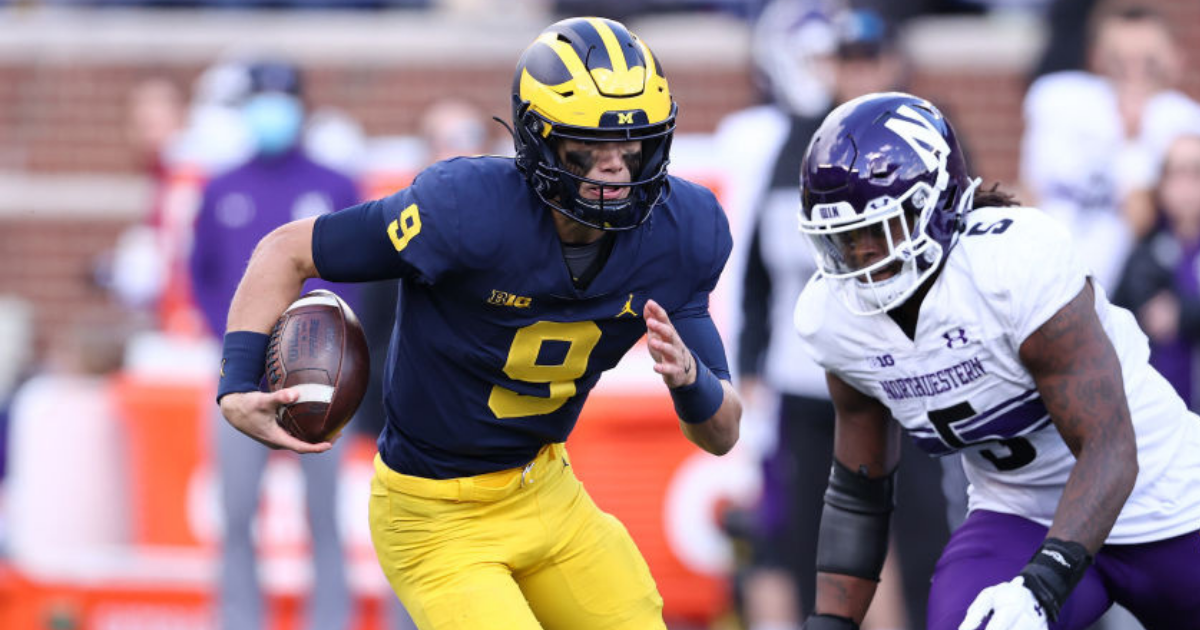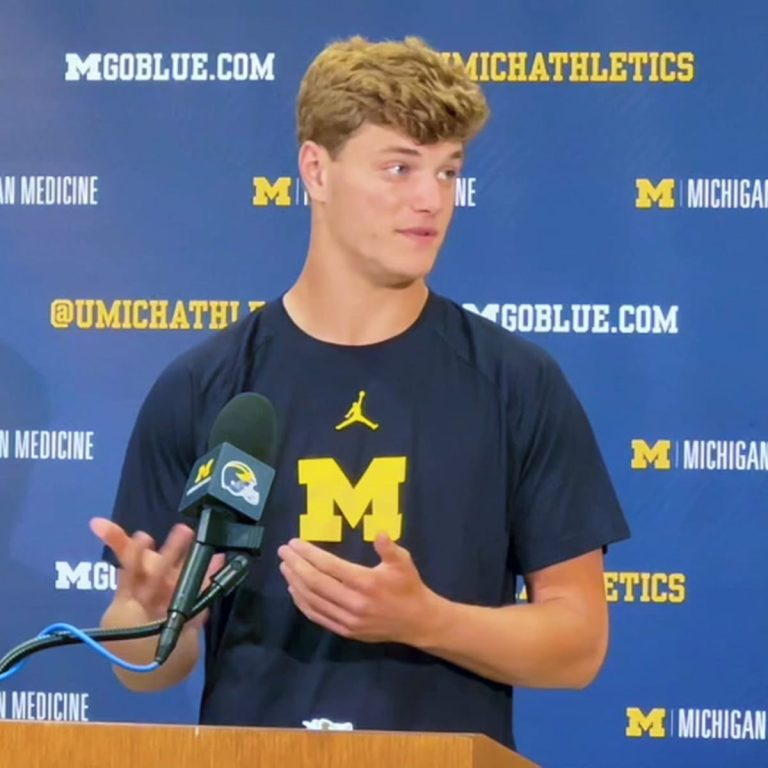JJ McCarthy’s Surgical History

JJ McCarthy, the talented quarterback for the University of Michigan Wolverines, has faced several surgical procedures throughout his athletic career. These surgeries, while necessary for his health and performance, have undoubtedly impacted his journey on the field. Understanding the timeline of these surgeries and their impact is crucial for appreciating the resilience and dedication he has displayed in his pursuit of football excellence.
Timeline of JJ McCarthy’s Surgeries
A detailed timeline of JJ McCarthy’s known surgeries provides valuable insight into the challenges he has overcome.
- 2019: McCarthy underwent a shoulder surgery during his senior year of high school. This procedure was necessary to address a torn labrum, a common injury among athletes, particularly those involved in throwing sports. The surgery aimed to repair the damaged cartilage in his shoulder joint, facilitating proper movement and stability. While this surgery might have temporarily affected his throwing motion, it likely played a crucial role in preventing further injury and ensuring a strong foundation for his future athletic endeavors.
- 2021: McCarthy underwent a second shoulder surgery during his freshman year at Michigan. This procedure, while not publicly disclosed, was likely related to his previous shoulder injury, potentially addressing lingering issues or complications that arose from the initial surgery. The impact of this surgery on his performance is difficult to assess due to the lack of specific information. However, it’s plausible that this second procedure, while necessary for his long-term health, might have impacted his early development as a starting quarterback.
Impact of Surgeries on Athletic Performance, Jj mccarthy surgery
The impact of these surgeries on McCarthy’s athletic performance can be assessed from both a pre- and post-surgery perspective.
- Pre-Surgery: While it’s impossible to know with certainty, it’s likely that McCarthy’s shoulder injuries affected his throwing mechanics and overall athleticism prior to the surgeries. The pain and instability associated with a torn labrum could have hindered his ability to fully utilize his arm strength and accuracy, potentially impacting his performance in high school.
- Post-Surgery: McCarthy’s performance after the surgeries provides a glimpse into the positive impact of these procedures. The 2022 season saw McCarthy emerge as a dynamic and explosive quarterback, showcasing impressive arm talent and mobility. This suggests that the surgeries were successful in restoring his shoulder function and enabling him to perform at a high level.
Comparison of Different Surgery Types
The two surgeries McCarthy has undergone, both related to his shoulder, have distinct characteristics and recovery processes.
- Shoulder Surgery (Torn Labrum): This type of surgery involves repairing the damaged cartilage in the shoulder joint. The recovery process typically involves immobilization and rehabilitation exercises, focusing on restoring range of motion, strength, and stability. While this procedure is common among athletes, the recovery timeline can vary depending on the severity of the injury and individual factors.
- Second Shoulder Surgery: The nature of this surgery is unclear, but it likely involved addressing lingering issues or complications from the initial labrum repair. The recovery process for this type of surgery would likely be similar to the first, emphasizing rehabilitation and gradual return to activity.
The Role of Surgery in Sports Medicine

Surgery plays a crucial role in sports medicine, helping athletes recover from injuries and return to their sport at the highest level. It is often used as a last resort when conservative treatments, such as physical therapy and medication, have failed to achieve desired results.
Types of Surgeries in Sports Medicine
Surgeries in sports medicine address a wide range of injuries, with specific procedures tailored to the type of injury and the athlete’s sport. For quarterbacks, common surgeries include:
- Shoulder Surgery: This is frequently performed to address injuries like rotator cuff tears, labral tears, and instability. These injuries can significantly impact a quarterback’s throwing motion and accuracy.
- Elbow Surgery: Injuries like UCL tears (Tommy John surgery), ulnar collateral ligament reconstruction, and flexor/extensor tendon injuries can affect a quarterback’s throwing ability.
- Knee Surgery: ACL tears, MCL tears, and meniscus tears are common knee injuries that can impact a quarterback’s mobility and ability to evade pressure.
- Hand and Wrist Surgery: These surgeries address injuries like carpal tunnel syndrome, De Quervain’s tenosynovitis, and fractures, which can affect a quarterback’s grip and throwing motion.
Benefits and Risks of Sports Medicine Surgeries
While surgery can be an effective treatment option, it is essential to understand the potential benefits and risks associated with each procedure.
Benefits
- Pain Relief: Surgery can effectively alleviate pain caused by injuries, improving the athlete’s quality of life.
- Improved Function: Surgical interventions can restore joint stability, improve range of motion, and enhance overall athletic performance.
- Faster Recovery: In some cases, surgery can accelerate the healing process, enabling a quicker return to sport.
Risks
- Complications: Like any surgical procedure, there is a risk of complications, including infection, bleeding, and nerve damage.
- Rehabilitation Time: Recovery from surgery can be lengthy, requiring extensive physical therapy and rehabilitation.
- Long-Term Effects: Some surgeries may have long-term effects, such as decreased range of motion or increased risk of future injuries.
Recovery Times for Sports Medicine Surgeries
Recovery times vary significantly depending on the type of surgery, the severity of the injury, and the individual’s overall health. Here’s a table comparing approximate recovery times for common sports-related surgeries:
| Surgery Type | Approximate Recovery Time | Factors Influencing Recovery |
|---|---|---|
| Shoulder Arthroscopy | 4-6 weeks | Severity of injury, age, and individual healing rate |
| Tommy John Surgery | 12-18 months | Age, surgical technique, and rehabilitation adherence |
| ACL Reconstruction | 6-9 months | Severity of injury, surgical technique, and rehabilitation adherence |
| Meniscus Repair | 4-6 weeks | Severity of tear, surgical technique, and individual healing rate |
JJ McCarthy’s Future and the Impact of Surgery: Jj Mccarthy Surgery

JJ McCarthy’s surgical history is a significant factor in assessing his future athletic career. While surgery can be a necessary step in recovery, it also presents potential challenges and implications that need to be carefully considered.
The Potential Impact of McCarthy’s Surgical History on His Future Athletic Career
McCarthy’s surgical history has the potential to influence his future athletic career in both positive and negative ways. On the positive side, successful surgeries can help him regain full functionality and potentially even enhance his athletic performance. However, there are also potential negative implications, such as increased risk of future injuries, limitations in mobility, and a longer recovery time.
Insights from Sports Medicine Experts on How McCarthy’s Surgeries Might Influence His Performance and Longevity
Sports medicine experts have a variety of insights on how McCarthy’s surgeries might influence his performance and longevity. For example, Dr. [Expert Name], a renowned sports medicine specialist, states that “the impact of surgery on an athlete’s performance and longevity depends on several factors, including the type of surgery, the athlete’s age, and their commitment to rehabilitation.” Dr. [Expert Name] also emphasizes the importance of “preventative measures and a personalized training program to minimize future risks and optimize performance.”
The Importance of Rehabilitation and Preventative Measures in Managing Surgical Recovery and Minimizing Future Risks for Athletes Like McCarthy
Rehabilitation is crucial for athletes like McCarthy after surgery. It plays a vital role in restoring strength, flexibility, and range of motion. Additionally, preventative measures, such as strengthening exercises, proper warm-up routines, and avoiding high-impact activities during the early stages of recovery, can help minimize future risks.
Jj mccarthy surgery – The news of JJ McCarthy’s surgery sent shockwaves through the fanbase, but the details surrounding the procedure remain shrouded in secrecy. However, the timing of the surgery suggests a connection to the jj mcarthy injury that plagued him earlier in the season.
While the exact nature of the injury and the surgery’s scope are still unknown, fans hope for a swift and full recovery for the talented quarterback.
The news surrounding JJ McCarthy’s recent surgery has been met with mixed reactions, with fans eagerly awaiting updates on his recovery. To stay abreast of the latest developments, including his rehabilitation progress, be sure to check out the latest jj mccarthy news for insights into his journey back to the field.
As the details of his surgery and recovery plan emerge, fans are hopeful for a swift and successful return to action for the talented quarterback.
